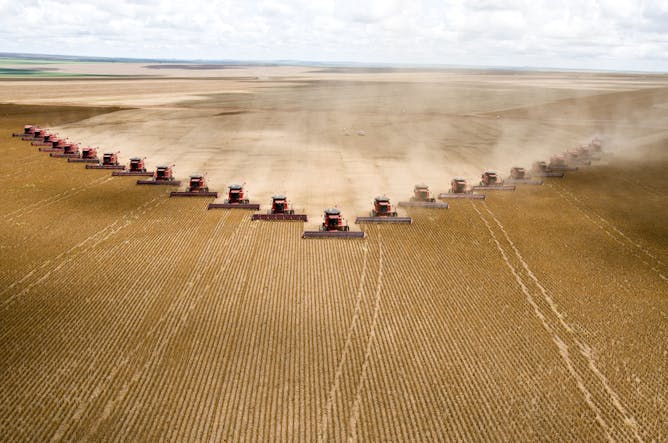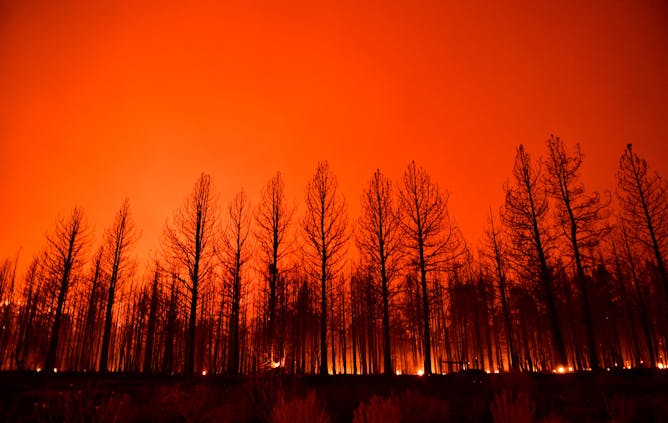|
|
|
|
Amid the many warnings around growing hunger in many parts of the world, scientist Deepak Ray published an eye-opening study. Looking at 10 major crops, he and his collaborators estimated that by 2030 only about 29% of the global harvests will be consumed as food in the countries where they were produced. That’s down from 51% in the 1960s. In his summary of the study Ray explains that because of global demographic changes and policies, these crops are increasingly being used in processed ingredients such as animal feed and biofuels and being sold on global markets.
The Biden administration just announced that another round of rapid home COVID-19 tests is now available free of charge. UMass Chan Medical School researchers Nathaniel Hafer and Apurv Soni unpack the perennial question: How accurate are these antigen tests? They explain the latest research, including their own on how over-the-counter rapid tests perform in real-world settings, and also explain why taking two tests 24 to 36 hours apart is critical for detecting infections.
In recent years studies have shown that trees have great potential to soak up the rising levels of carbon dioxide in the atmosphere, but two new studies temper those hopes. Ecologist William Anderegg, who was involved in both studies, explains that the effects of stressors exacerbated by climate change, such as drought, fires and pests, are happening faster than many scientists expected. “We’re also seeing evidence that the benefits trees get from higher levels of carbon dioxide in a warming world may be more limited than people realize,” he writes.
Also in this week’s science news:
If there’s a subject you’d like our team of science editors to investigate, please reply to this email.
|

|
Martin La Monica
Director of Editorial Projects and Newsletters
|
|

Harvesting soybeans in Mato Grosso, Brazil. Brazil exports soybeans and uses them domestically to make animal feed and biodiesel.
Paulo Fridman/Corbis via Getty Images
Deepak Ray, University of Minnesota
A new study finds that by 2030, less than one-third of the world’s major crop harvests will go directly to feed people.
|

Once in short supply, rapid antigen tests are now available throughout the U.S.
Boy_Anupong/Moment via Getty Images
Nathaniel Hafer, UMass Chan Medical School; Apurv Soni, UMass Chan Medical School
With the relaxation of mask-wearing mandates, there’s even more need to know how much over-the-counter tests help.
|

When trees burn, all the carbon they have stored goes back into the atmosphere.
Patrick T. Fallon/AFP via Getty Images
William R.L. Anderegg, University of Utah
More carbon dioxide in the air doesn’t necessarily mean more growth for trees, and the increasing risk of wildfires and drought has major consequences, as an interactive map shows.
|
|
|
-
Andy Weiss, Vanderbilt University; Caitlin Murdoch, Vanderbilt University
While iron and calcium are the metals that get the most attention, zinc is also important for human health and function.
-
Nick Shay, University of Miami
With La Niña helping clear the way for a busy hurricane season, this wide current of warm water could spell disaster for the northern Gulf Coast.
-
Astrid Schütz, University of Bamberg; Brad Bushman, The Ohio State University
For a while it was all the rage to adopt Wonder Woman’s famous stance and other body positions that allegedly pumped up your confidence – until more studies of the phenomenon failed to find the connection.
-
Caitlin Grady, Penn State; Lauren Dennis, Penn State
Climate change is affecting hydropower in different ways across the country.
-
Chris Impey, University of Arizona
Sagittarius A* is a massive black hole at the center of the Milky Way. Now that astronomers have imaged it, they can begin to learn more about black holes within other galaxies across the universe.
-
Malia Jones, University of Wisconsin-Madison
People want a simple answer. Is this action safe? But despite Anthony Fauci bouncing responsibility for COVID-19 risk assessment to individuals, your risk can’t be boiled down to one probability.
-
Matt Kasson, West Virginia University; Brian Lovett, West Virginia University; Patricia Kaishian, Bard College
Fungi underpin life on Earth, but are far less well catalogued and understood than animals and plants. Three scientists call for including fungi in conservation strategies and environmental laws.
|
|
|
| | |
| | |
| |
| |
| |
|
|
|